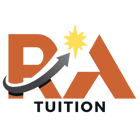Understanding Mandatory Education and the PE Portfolio
As a professional accountant, staying updated and continuously improving your skills is crucial. The NBA (Nederlandse Beroepsorganisatie van Accountants) has established a clear framework for this through the PE Portfolio (Permanent Education). Here, we’ll break down what’s required and how to create an effective PE Portfolio.
12/14/20243 min read


No More PE Points – Welcome the PE Portfolio
First, it’s important to note that PE points are no longer used to track professional education. Instead, you’ll create a PE Portfolio. This is a personalized document that outlines your learning activities and reflections on how they contribute to your professional growth.
The PE Portfolio is divided into two phases:
Phase 1: Plan of Action
The first phase sets the foundation for your professional development over the coming year. You’ll complete this phase, ideally in the first quarter, unless particular circumstances require an abbreviated version. Here’s what it involves:
Activities and Results: List the professional activities you’ll undertake and the outcomes you aim to achieve.
Learning Objectives: Identify what you want to learn or improve upon through these activities. The number of learning objectives depends on the size of the learning objectives. Experience shows that accountants average three to five learning objectives. A lower number is possible if, for example, a long-term study is being followed, or if you are going to stop working soon.
It can help to formulate the learning objectives in a SMART way, so that there is a greater chance that you achieve your learning goals. SMART stands for specific, measurable, achievable, relevant, and time-bound.Planned Learning Activities: Detail the specific actions you’ll take to meet your learning objectives, such as attending courses, reading professional literature, or joining seminars.
Phase 2: Reflection
At the end of the year, you’ll evaluate and reflect on your learning journey. This phase involves:
Performed Learning Activities: Describe the educational activities you completed and how they went. In reflecting on these activities, consider using an established reflection model like Korthagen’s cycle (my personal favorite) or the STARR method.
Achieved Learning Objectives: Assess how the skills and knowledge you gained have contributed to your professional practice. Applying Korthagen’s cycle or STARR ensures you’re not just listing achievements but explaining how and why your new skills or knowledge matter in real-life settings.
In some cases—such as multi-year courses or complex, long-term projects—you may not reach your final goal within a single reporting period. That’s perfectly normal. According to the NBA: You should detail partial progress made, what you’ve learned so far, and how this partial achievement still contributes to your professional practice. Indicate any adjustments to your learning plan, and outline next steps for completing the objective in the upcoming period.
Guidelines and Compliance
Your PE Portfolio doesn’t require a specific format, but it must be saved in your personal environment for at least six years. Each year, by 31 January at the latest, you’ll need to submit a PE compliance statement on MijnNBA.nl, confirming that your portfolio is complete.
Sampling and Submissions
Each year, the NBA selects a sample group of members to review their PE Portfolios. If you’re selected, you’ll need to:
Convert your portfolio into a PDF.
Include supportive documentation, such as:
Proof of participation (e.g., certificates or attendance lists).
Slides from presentations.
Summaries of literature or professional articles read.
Meeting minutes from relevant discussions.
If you cannot provide documentation for a specific activity, you’ll need to submit a written explanation.
Mandatory PE Topics
The NBA periodically announces a mandatory education topic as part of its commitment to keeping professionals updated on critical and relevant themes. For example, in 2024, the required topic is Sustainability, which includes themes like ESG (Environmental, Social, and Governance). Professionals must dedicate at least eight hours to the topic and include it as a learning objective in their portfolios.
Tips for Your PE Portfolio
Be Organized: Set reminders to complete Phase 1 early in the year and Phase 2 by the end of the year.
Track Progress: Keep thorough records of your learning activities throughout the year.
Create a Word File: If you’re struggling to find tools in English, this simple Word document can serve as an effective portfolio.
Focus on Documentation: Ensure you gather proof for all your learning activities to avoid challenges during a sample review.
Remember, you may use AI tools to help improve your formatting, grammar, or overall structure, but do NOT rely on AI to create the substance of your report—remember VGBA. Generating content with AI instead of reflecting on your own experiences is unethical and undermines your integrity.
P.S. Have specific questions about the PE Portfolio or mandatory topics? Let us know in the comments, and we’ll dive deeper into the areas you’re curious about!
RA Tuition at a glance
Our mission is to empower accounting professionals with the guidance, tools, and support they need to confidently navigate the RA journey in English. Fostering personal growth and professional success.
Newsletter
Javier@ratuition.com
+31-20-1234567
© 2025. All rights reserved.
